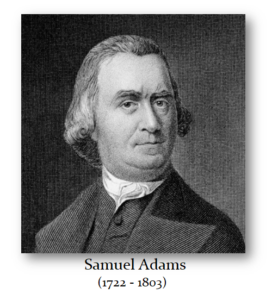Unraveling the Economic Roots of the American Revolution
The American Revolution is often portrayed as a heroic struggle for independence against British oppression. But what if there was more to the story than meets the eye? Delving into the economic intricacies of the time period uncovers a rich tapestry of financial mismanagement, war-induced inflation, and fiscal crises that set the stage for rebellion.
One pivotal figure in the revolution was Samuel Adams, a stalwart leader who championed American independence. Adams, along with other key players like John Dickinson, navigated a turbulent political landscape to challenge British colonial policies. The tensions between pro-independence advocates like Adams and anti-independence voices like Dickinson were emblematic of the ideological divide that ultimately led to the Declaration of Independence.
But what fueled this divide? The series of conflicts between Britain, France, and Spain throughout the 18th century set in motion a series of economic upheavals that reverberated across the American colonies. Wars like the War of Jenkins’ Ear and the Seven Years’ War strained colonial economies, leading to rampant inflation and financial instability.
The issuance of paper currency by colonial governments to finance wartime efforts further exacerbated the economic turmoil. States like Pennsylvania, New York, and South Carolina resorted to printing money backed by shaky fiduciary standards, while Massachusetts clung to a pure specie standard. The differing approaches to monetary policy shed light on the complex interplay between war, taxation, and inflation in colonial America.
As tensions between the colonies and the British crown escalated, measures like the Stamp Act of 1765 and the Townshend Acts further strained relations. The imposition of direct taxes, trade restrictions, and punitive tariffs sparked outrage among colonists, culminating in acts of civil disobedience and protests like the Boston Massacre.
The legal battles and political maneuvering of the time, exemplified by landmark cases like Entick v. Carrington and the defense of accused soldiers in the Boston Massacre trial, underscored the deep-rooted grievances that fueled the revolution. The pushback against arbitrary power, the demand for representation, and the fight for individual liberties laid the groundwork for a revolutionary shift in governance.
Today, as debates over taxation, government spending, and financial policy continue to shape our economic landscape, the lessons of the American Revolution offer valuable insights into the perils of unchecked power and fiscal mismanagement. The echoes of the past remind us that economic stability, fiscal responsibility, and equitable governance are essential pillars of a thriving society.
At Extreme Investor Network, we delve into the untold stories of economic history, offering unique perspectives on the interplay between finance, politics, and revolution. Join us as we unravel the economic roots of the American Revolution and explore the enduring legacy of fiscal tumult and financial resilience. Empower yourself with knowledge, challenge conventional narratives, and discover the hidden truths behind historical events.

